Blueberries, with their vibrant hue and burst of sweetness, have secured their place as a beloved fruit on breakfast tables and in desserts.
These small, round berries are delicious and packed with enormous health benefits.
Known for their rich antioxidant content, blueberries promote heart health and enhance the body’s cognitive functions.
But let’s turn our attention to a question that often crosses our minds while enjoying these delicious berries—do blueberries have seeds? While it might initially seem simple, understanding blueberry seeds is more complicated than it looks.
But don’t worry about anything, because in this article, we will reveal some interesting facts about blueberry seeds.
So, without wasting any time, let’s begin!
Do Blueberries Have Seeds?
Perhaps it surprises you, but the answer is YES!
Beyond the common misconception that blueberries themselves are the seeds of the blueberry plant, this isn’t the case. Just because you don’t quickly notice the presence of tiny seeds doesn’t mean that they aren’t there.
The seeds are present within the fruit. However, they are so small that they pass almost unnoticed.
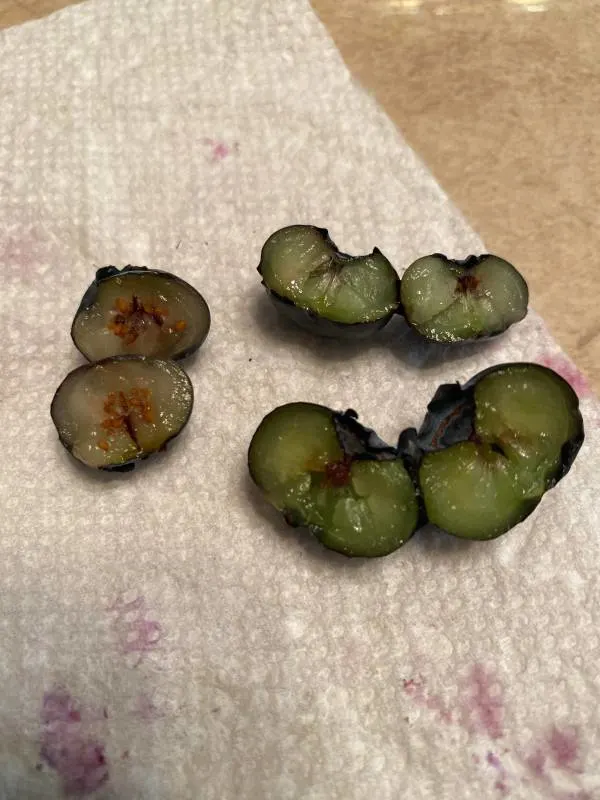
How Many Seeds Do Blueberries Have?
Well, the exact number of seeds generally varies, depending on the age of the plant and the position of the fruit on the branches.
Regarding the position, there are two types of blueberries:
- Low bush blueberries
- High bush blueberries
Low-bush blueberries are generally smaller and tend to have around ten seeds within them. In contrast, high-bush blueberries are bigger and tend to have about twenty seeds.
Can You Eat Blueberry Seeds?
Blueberry seeds are relatively healthy and make blueberries an overall beneficial and nutritious fruit.
Apart from that, the seeds of blueberries are very easy to digest because they are small and soft and can easily be broken down by our digestive system, unlike other fruits such as cherry and peach—which have poisonous seeds and should never be consumed under any circumstances.
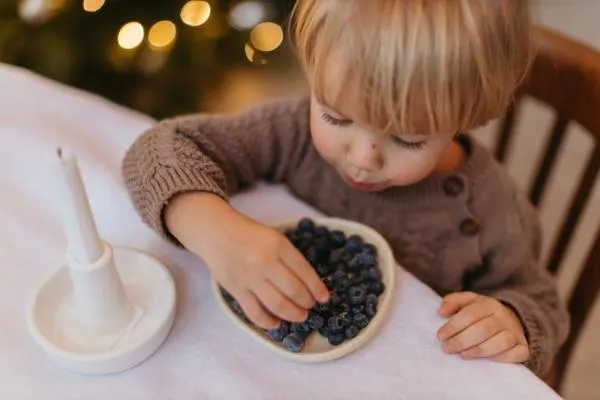
How Do You Get Seeds Out of the Blueberries?
Growing blueberry plants requires extracting seeds from the fruit.
This process might seem challenging, but it is indeed rewarding in the end.
Despite the potential messiness involved, the effort put into extracting blueberry seeds is justified.
There are many different methods we can use in that regard.
Let’s discuss them in detail:
1. Grinding
The most common method used for the extraction of seeds is grinding.
- To remove seeds from blueberries through grinding, use a food grinder.
- Grind the blueberries until they’re all crushed.
- Transfer the crushed blueberries to a jar and add water.
- You’ll see the blueberry seeds settle at the bottom of the jar.
Repeat the grinding a few times until only the seeds are left in the jar.
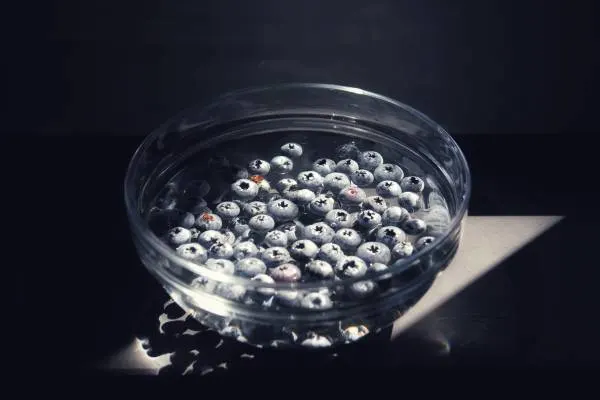
2. The Mashing Method
The other method you can go with is the mashing method.
- Get some blueberries, about half a cup, and put them in a bowl.
- Mash them up using your hands or a potato masher.
- Once mashed, put the blueberries in a jar and pour water over them.
- Swirl the jar gently to separate the seeds from the pulp.
- Keep doing this until only the seeds are left at the bottom of the jar.
- Now, place the seeds on a paper towel to dry.
The whole procedure should only take about 5–10 minutes.
NOTE: Don’t toss away the leftover pulp; you can use it to make tasty desserts or smoothies!
Uses of Blueberry Seeds
Blueberry seeds are often overlooked when enjoying the tasty berries. But they can be used for different things.
Let’s discuss a few of them here:
1. Use Blueberry Seeds to Grow More Berries
You might have wanted to know whether blueberry seeds can be used to grow more berries.
Well… now you know! Yes, they can be used for growing more blueberries.
Want to know the whole process?
Let’s discuss it in detail.
Germination of the Seeds
After successfully extracting and draining the blueberry seeds, it’s time to plant them.
The optimal time to start germinating blueberry seeds is in January or February.
- Use a 3-inch box filled with finely ground moist sphagnum moss for sowing the seeds.
- Ensure an even spread and cover them lightly with a thin layer of moss, keeping them moist.
- Maintaining a warm temperature between 60 to 70 degrees Fahrenheit is crucial for successful germination.
- Cover the box with a newspaper during the initial phase, and after about a month, once germination occurs, remove the newspaper.
- Once the tiny seedlings emerge, place the box in sunlight, either in a greenhouse or a windowsill.
- Allow the seedlings to grow in the moss until they reach a height of 2–3 inches.
NOTE: Harden off the seedlings for a week or two before planting them outdoors during the suitable spring or fall seasons for optimal results.
Moving the Seedlings Into the Pots
Once your blueberry seedlings reach a sufficient height, it’s time to transfer them into 2-3-inch pots filled with a well-balanced mix of 1/3 peat, 1/3 sand, and 1/3 soil.
An equal combination!
Ensure thorough watering and place the pots in sunny locations to facilitate their continued growth. As the weather warms up, you can remove the seedlings from the pots and transplant the matured seedlings into the ground.
Choose an open, sunny location that receives at least 6 to 8 hours of direct sunlight daily.
Throughout the summer, maintain a consistent watering routine to support the flourishing blueberry plants as they establish themselves in their new environment.
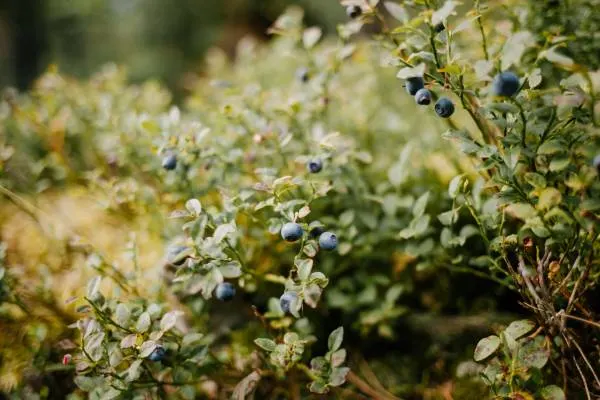
Soil Conditions Required by the Blueberry Plant
Blueberries prefer acidic and well-drained soil to grow healthier.
The ideal pH range for blueberries is between 4.0 and 5.5. This acidic environment allows the plants to access essential nutrients, such as iron, more effectively. If your soil’s pH exceeds the recommended range, you may need to amend it to create a more acidic environment.
One common amendment is peat moss, which is acidic and helps lower the soil pH. Mix peat moss into the soil according to the package instructions.
Apart from that, mulch helps retain soil moisture by preventing excessive evaporation.
Mulch also acts as a barrier against weeds, preventing them from competing with blueberry plants for nutrients and water.
2. Blueberry Seed Oil
Blueberry seeds offer a wealth of health benefits beyond their role in fruit production.
Packed with phytonutrients, Vitamins A, B Complex, C, and Omega-3 fatty acids, blueberry seed oil becomes a flexible addition to personal care routines.
Its application extends to promoting hair and scalp health, enriching the skin with antioxidants, and aiding in the defense against the harmful effects of UV radiation. Furthermore, the organic properties of blueberry seed oil make it an effective natural moisturizer, relieving dry lips and cracked skin.
So, the nutritional goodness of blueberry seeds brings various health benefits for overall well-being.
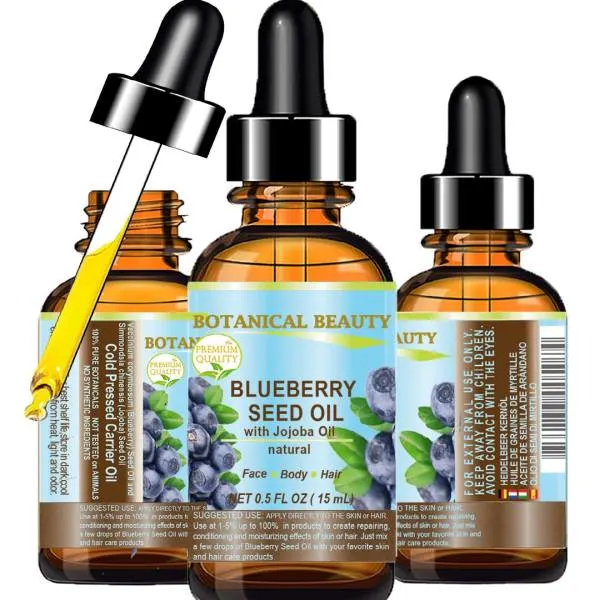
That’s all for today.
Now, it’s time to move toward the conclusion.
Conclusion
Blueberries possess not only a delightful taste but also plenty of health benefits.
Contrary to a common misconception, blueberries are not themselves the seeds but rather house tiny seeds within their succulent flesh.
Different processes can help you to extract seeds from blueberries efficiently, such as grinding and mashing. Apart from growing new blueberries from the seeds, there are plenty of health benefits you can get from these seeds.
So, don’t be fooled by the common misconceptions anymore!
I hope this post helps you a lot. If you have any other gardening-related queries, feel free to ask them in the comment section below.
Regards,
Moiz Atiq.

